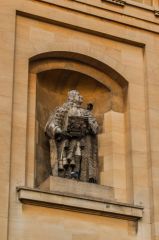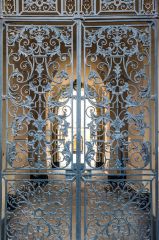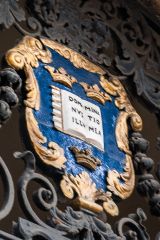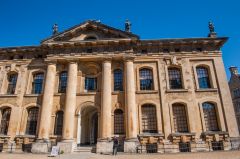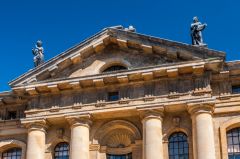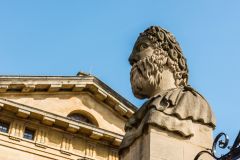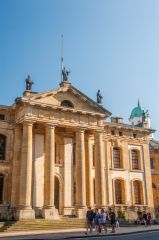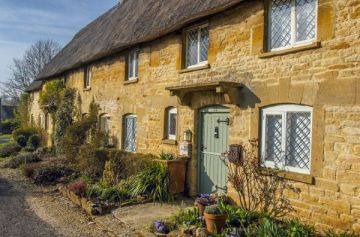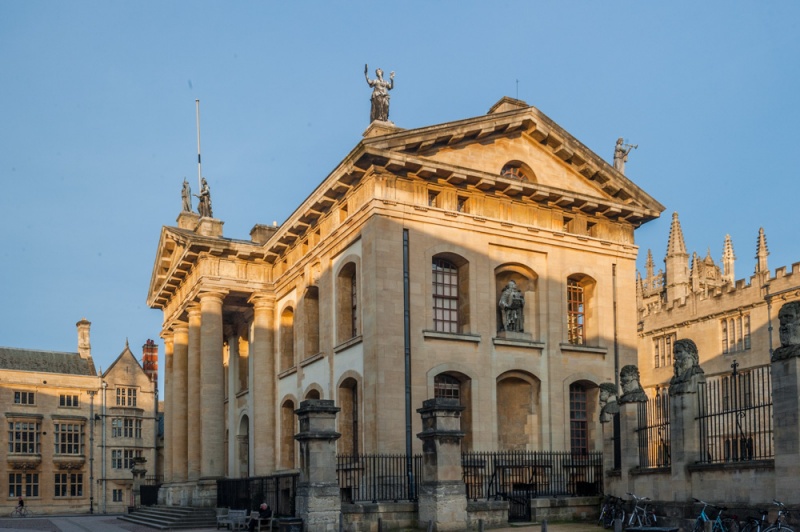
The Clarendon Building is an iconic sight in the historic centre of Oxford. The rectangular neo-classical design stands beside the Sheldonian Theatre and was the creation of Nicholas Hawksmoor, who wanted to create an imposing grand entrance to Oxford University, a very literal gateway to learning.
History
When Sir Christopher Wren's Sheldonian Theatre was built in 1669 it served two functions. It was a space for university ceremonies, and housed the University of Oxford's printing presses. Unfortunately, the juxtaposition of printing presses and ceremonial functions created problems, not least that the printers had to stop work for ceremonies lest the noise of the presses caused a disruption. By the late 17th century the presses had been moved to several other locations, including a temporary building near the Theatre. A better solution was needed, but money was short.
Rescue was at hand, however, in the shape of a book written in 1702 by the 1st Earl of Clarendon called the 'History of the Great Rebellion'. In an act of generosity, Clarendon's son gave the University the copyright to the book. The profits from the 'History' enabled the University to plan a new building just to house its printing presses.
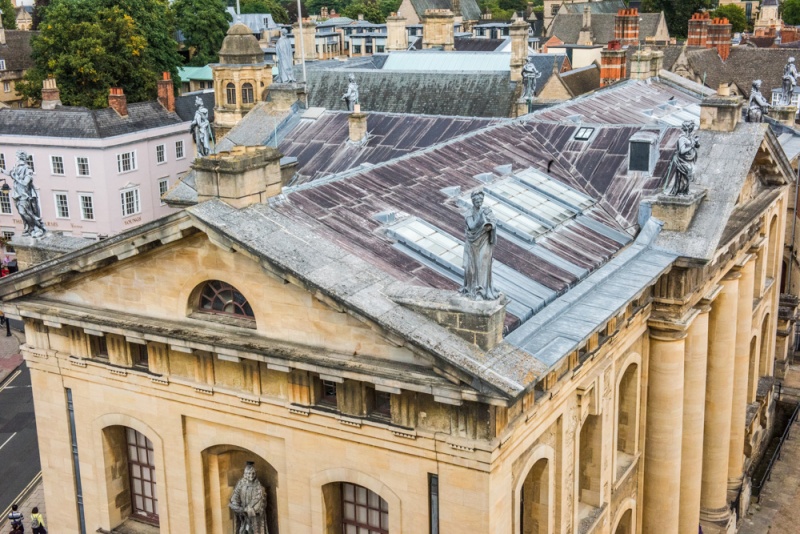
The University purchased several old houses beside the Sheldonian Theatre and pulled them down to create a large building space. A note written by the Vice-Chancellor in 1712 reveals that the University called on a mason named William Townesend and 'one Haukes an Architect in London', to prepare a design for the new building. The 'Haukes' was Nicholas Hawksmoor, pupil and partner of Sir Christopher Wren.
Hawksmoor's design was an imposing neo-classical rectangular building, dissected by a large arch leading from Broad Street to the plaza in front of the Sheldonian. Hawksmoor used the Doric order throughout, with a huge portico facing Broad Street. The material was Headington stone, which unfortunately did not wear well. The building had to be refaced with Clipsham stone in 1920.
The new building was known as The Printing House. It was not called the Clarendon Building until 1832 when the University began using it as a registry.
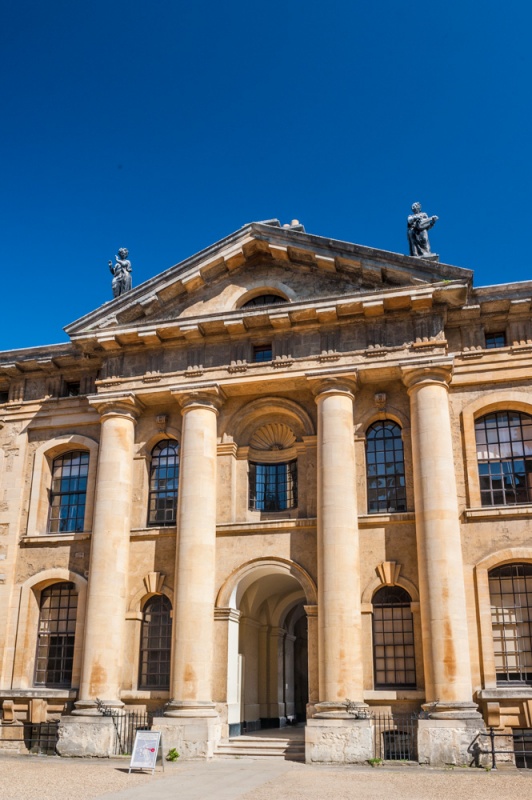
In 1829 the University police took over part of the Clarendon building as their station, with gaol cells in the basement. In 1831 a new building on Walton Street was built to house the Clarendon Press, and the Printing House was 'appropriated to the general business of the University'. Architect Sir Robert Smirke was called in to convert the interior to other uses.
The building was used a registry by the University until 1975, and was then taken over by the Bodleian Library. It is now home to the Library admissions department and is used as a meeting place for staff.
Beside the building and extending in front of the neighbouring Sheldonian Theatre and Museum of the History of Science are a series of busts set on high pedestals. The busts resemble Roman emperors and are sometimes called the 'Emperor Heads', but are actually not meant to depict anyone in particular. The busts were designed by Wren to complement the Theatre, and carved by William Byrd, a local mason. There were originally 14 heads, but one had to be taken down to make way for the Clarendon Building.
The Clarendon Building is topped with nine statues representing the Muses. These statues caused some controversy. They were at first refused by the University, and sat at the wharf for 2 years before they were erected. Two statues fell down over the centuries, and were replaced in recent years with fibreglass copies, given by Blackwell's bookshop across the road.
In a niche on the top floor on the west side of the building is a statue of Lord Clarendon.
The Clarendon Building is not usually open to the public. However, you can walk all around the exterior, and if you fancy a bit of exercise climb to the top of the Sheldonian Theatre for a wonderful view down onto the building and across the 'dreaming spires' of Oxford.
About Clarendon Building
Address: Broad Street,
Oxford,
Oxfordshire,
England
Attraction Type: Historic Building
Location: At the east end of Broad Street, at its junction with Catte Street
Website: Clarendon Building
Location map
OS: SP515064
Photo Credit: David Ross and Britain Express
HERITAGE
 We've 'tagged' this attraction information to help you find related historic attractions and learn more about major time periods mentioned.
We've 'tagged' this attraction information to help you find related historic attractions and learn more about major time periods mentioned.
Find other attractions tagged with:
NEARBY HISTORIC ATTRACTIONS
Heritage Rated from 1- 5 (low to exceptional) on historic interest
Museum of the History of Science - 0 miles (Museum) ![]()
Bodleian Library - 0 miles (Historic Building)
Hertford College - 0.1 miles (Historic Building) ![]()
Trinity College, Oxford - 0.1 miles (Historic Building) ![]()
New College - 0.1 miles (Historic Building) ![]()
All Souls College - 0.1 miles (Historic Building) ![]()
Lincoln College, Oxford - 0.1 miles (Historic Building) ![]()
Radcliffe Camera - 0.1 miles (Historic Building) ![]()
Nearest Holiday Cottages to Clarendon Building:
Witney, Oxfordshire
Sleeps: 4
Stay from: £591 - 1733
Eynsham, Oxfordshire
Sleeps: 4
Stay from: £591 - 1748
More self catering near Clarendon Building
